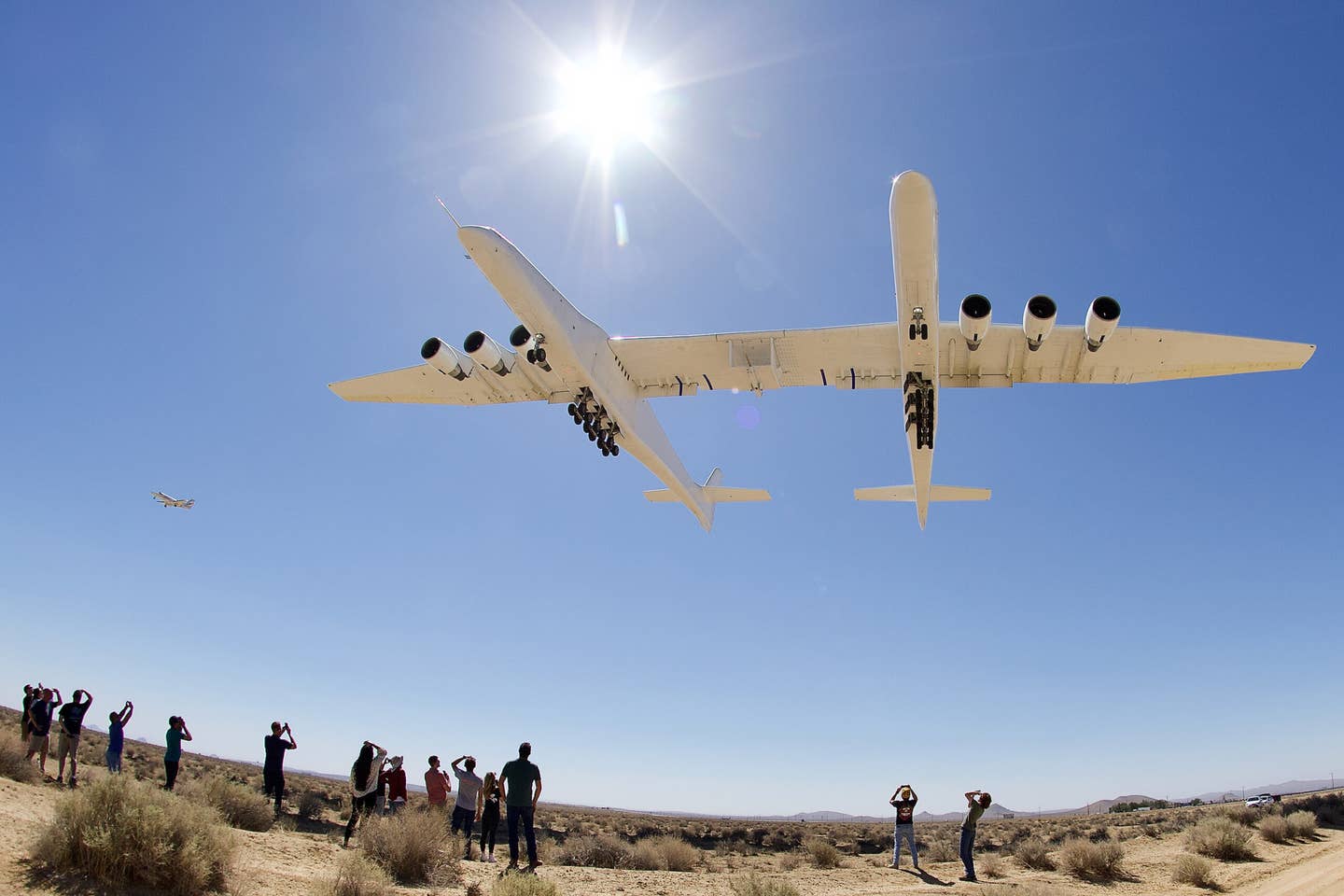World’s Largest Airplane Flies to New Heights
During its seventh test flight, Stratolaunch’s enormous airplane achieves a new maximum altitude: 27,000 feet.

The seventh mission of the world’s largest airplane further expanded its flight test envelope. [Courtesy: Stratolaunch/Matt Hartman]
Stratolaunch’s enormous operational-lift aircraft Roc achieved a new maximum altitude Thursday, as crew members further expanded the world’s largest airplane’s flight test envelope.
With help from its 384-foot wingspan and six Pratt & Whitney model PW4056 engines, Roc achieved a new maximum altitude of FL270, surpassing a previous mark of FL235 during its fourth flight last January. Operational goals call for Roc to fly to altitudes up to FL350. The aircraft reached a maximum speed of 175 kias, which is just shy of the 180 kias Roc achieved during the fourth flight.
The airplane’s seventh mission took place just a week after its previous flight, making this the shortest turnaround in the program’s three-year history.
Under clear skies and calm winds, Roc took off at 7:40 a.m. PT from Runway 30 at California’s Mojave Air and Space Port (KMHV), flying circular flight tracks not far from historic aerospace testing locations such as Edwards Air Force Base (KEDW) and Lockheed Martin’s iconic Skunk Works facility.
Three hours and one minute later, the airplane safely touched down at KMHV. Its maximum duration flight so far was flight No. 5 last May 4, when Roc flew for 4 hours, 58 minutes.
It was the latest mission aimed at developing the world’s largest airplane by wingspan into a flying launch pad for Talon-A hypersonic vehicles. “This new [maximum] altitude demonstrates we can reach the heights needed for effective Talon launch trajectories,” Stratolaunch posted on Twitter.
Roc’s flight test team used a recently installed air data boom on the airplane’s new center-wing pylon designed to gather aerodynamic metrics around the 15-foot-by-15-foot, 4-ton structure that will eventually carry the hypersonic testbeds.
Some of the test cards on this mission were carried over from last week’s flight, which was cut short because of a malfunctioning sensor near the left elevator on the left rear fuselage.
The rocket-powered testbeds will perform as threat replicators for hypersonic weapons research for commercial and U.S. military customers.
Talon-A vehicles include landing gear that will allow them to touchdown safely on runways after their missions.
A test flight demonstrating the airplane’s ability to carry a Talon-A is expected later this year. Following that, flight managers plan to demonstrate that Roc and its pylon can safely and effectively release Talon-A vehicles. By mid to late 2023, Stratolaunch has said, Roc is expected to be declared operational.

Sign-up for newsletters & special offers!
Get the latest FLYING stories & special offers delivered directly to your inbox






